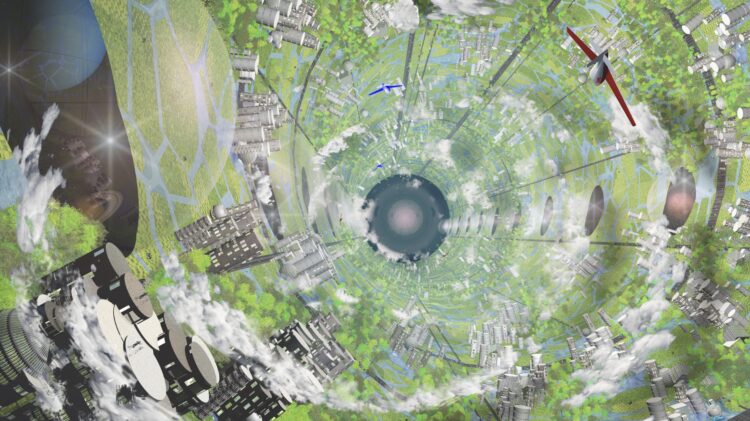In the acclaimed movie “Interstellar,” the character Cooper heads to a space station with an unusual shape, a cylindrical environment that puzzled many viewers. This design is not just a fantasy of science fiction but a representation of the O’Neill cylinder, a theory proposed by physicist and space visionary Gerard K. O’Neill.
Gerard Kitchen O’Neill (1927-1992) was an American physicist and space activist. As a faculty member at Princeton University, O’Neill was notable for inventing the particle storage ring, a crucial device for particle physics experiments. His interest in space colonization led him to propose innovative concepts like the O’Neill cylinder, which he envisioned as a solution for space habitation.
The key to these space structures lies in their rotation. By continuously spinning, the O’Neill cylinder generates a centrifugal force that simulates gravity. This force allows people to walk and live on the cylinder’s inner walls, creating an environment similar to Earth in terms of gravity.

This simulation of gravity is crucial for long-term human life in space, as zero gravity has known adverse effects on human health, including bone and muscle mass loss. The O’Neill cylinder, with its artificial gravity, could mitigate these issues, making life in space not only possible but also comfortable.
Moreover, the design includes solar panels to provide energy and advanced recycling systems, creating a self-sufficient and habitable environment. These elements are fundamental to any space habitat design, as efficient energy and recycling are essential for long-term sustainability in space.
The O’Neill cylinder could be a viable solution for prolonged interplanetary travel, offering a safe and sustainable refuge for humanity in space. It represents a vision of how we might live and travel in space, beyond low Earth orbit.
However, our current technology is far from achieving this feat. Although we have made significant advances in space technology, constructing a structure like the O’Neill cylinder requires advancements in materials, life support systems, and space propulsion.











